Reduction
Tree reduction includescrown reduction,partial reduction orweight reduction.
Crown reduction involves pruning back the ends of the branches evenly, giving it an overall cleaner and smaller canopy. A canopy can usually be 20-40% smaller in size after this process.

Weight reduction involves pruning back the heavy branches of a tree. Since trees absorb alot of water, this can add to the weight of some of branches. If extra weight isn't managed it can break branches, causing costly damage to your property or landscape.
Partial reduction can include reducing only branches which cause obstruction, for example if a branch is invading neighbouring properties or obstructing a neighbouring building.
Crown lifting
Crown Lifting (or Crown Raising) is the removal of the lowest branches, and may include preparing lower branches for future removal. This then lifts the overall size of the trees canopy from the bottom up.

Crown lifting is generally used when the lower limbs are interfering with objects or its environment below. This then ensures that buildings, people and vehicles are free of interfering branches.
Crown Thinning
Crown thinning involves the removal of a proportion of secondary and small, live branches from throughout the crown to thin the density within the tree crown.
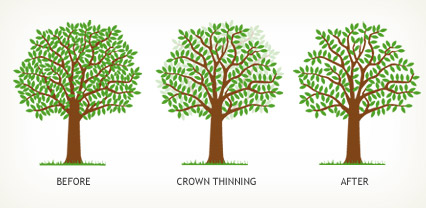
This process not only allows more natural light through trees, but helps prevent wind damage.
Crown Clean and Dead Wooding
As a tree matures it is completely natural for it to produce dead and dying wood.
Crown cleaning and dead wooding involves the removal of dead, dying or diseased wood from the canopy of the tree.
Acrown clean is done for safety reasons, as it is far safer for the crown of the tree to only hold live wood. It can also include the removal of duplicated, crossed or defected branches.
The impact area (the area directly beneath the trees canopy) will be a safer environment to be in, the tree has little chance of its limbs shedding or falling from its canopy.
Felling
Some times it is required that a tree has to be removed (felled). For safety, a tree usually will have to be sectionally dismantled which involves climbing the tree and taking it down piece by piece.
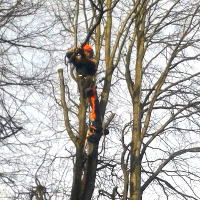
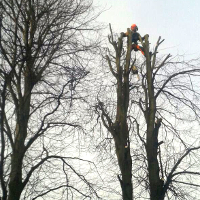
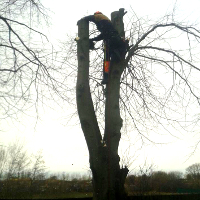
Pollarding
Pollarding is when all of the trees limbs are pruned right back to the stem resulting with only the main stem or trunk remaining.
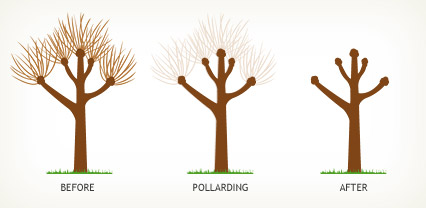
When a tree is trimmed this way, its branches are cut back without affecting the health of the tree. Not all trees are capable of being cut this way and remain healthy.
Hedge Cutting & Trimming
This involves the trimming and topping of all types of hedges. We can reduce the height and sides to give a uniformed look.
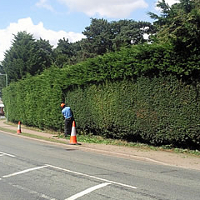
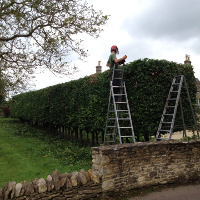
Formative Pruning
Formative pruning is pruning performed during the early years of a tree's growth to establish a balanced shape with strong branches or to correct defects or weaknesses that could affect structure in later life.
Veteran Tree Management
Veteran trees are ancient specimens in the final stage of their life. Because of their old age they provide us with significant biological, aesthetic and cultural interest.
Since veteran trees has a slower vitality they can become dangerous condition, but we can safely preserve your old trees and return them to a more attractive state.
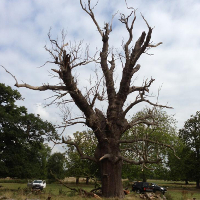
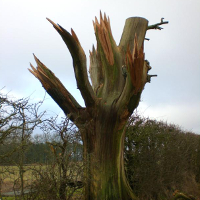

Creating natural looking fractures in veteran tree branches can give them a more natural appearance over pruning them.
Stump grinding/winching out trunks
When tree removal is performed improperly there can be unsightly or obstructive tree stumps remaining, which can cause hazard or lower the appearance of a landscape.Stump grinding is the fastest and most efficient way to remove tree stumps.
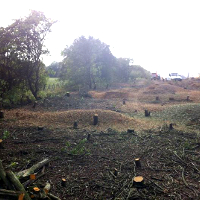
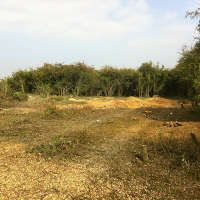

Site clearance
Includes removing trees and shrubs from brown field land or allocated construction sites. Specialist machinery will be used to remove trees, shrubs, hedges, stumps and roots.
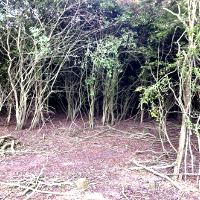
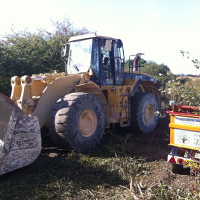
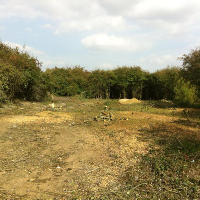
Performingsite clearance provides access for future construction and is compliant with legal wildlife protection schemes.